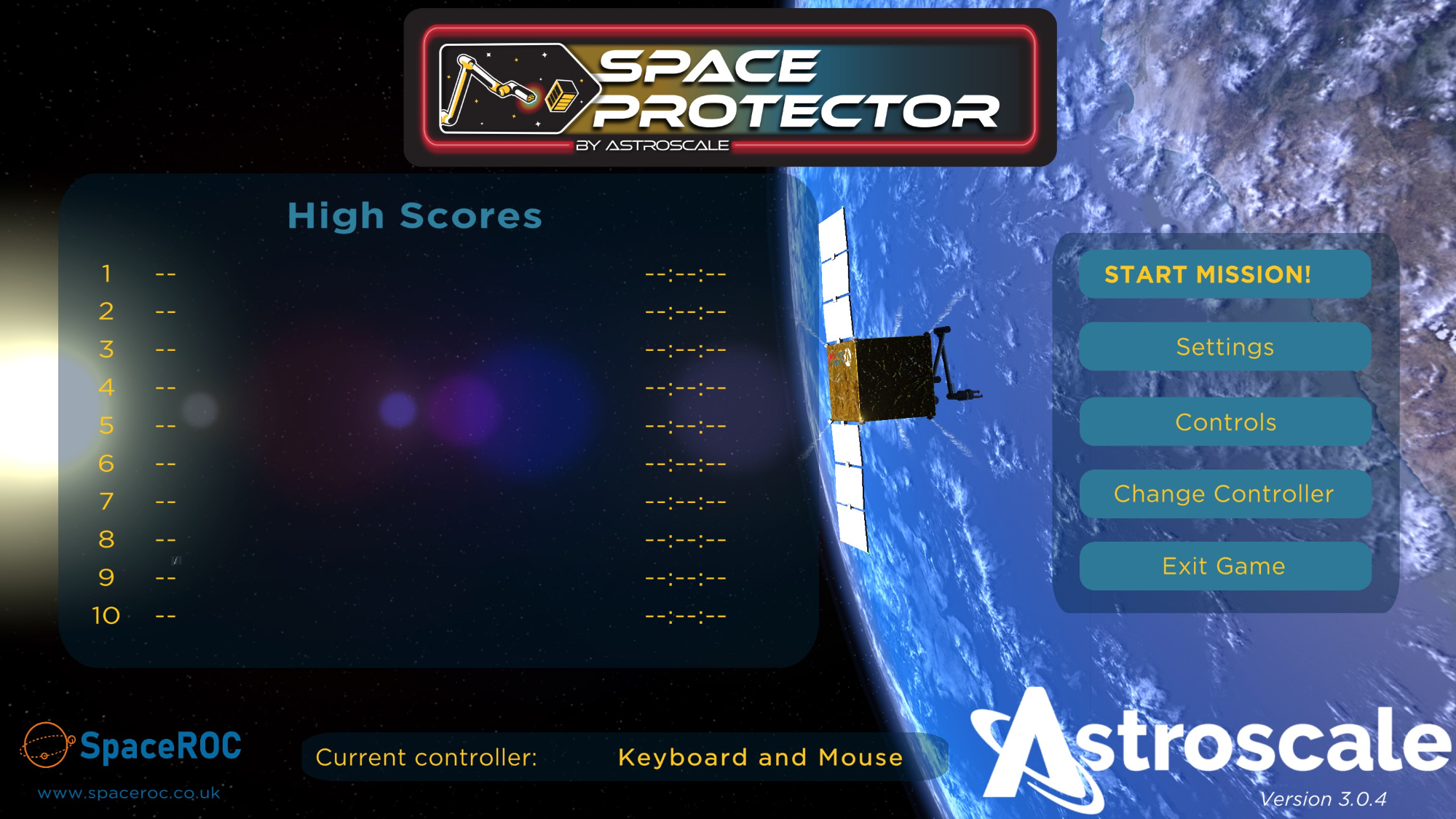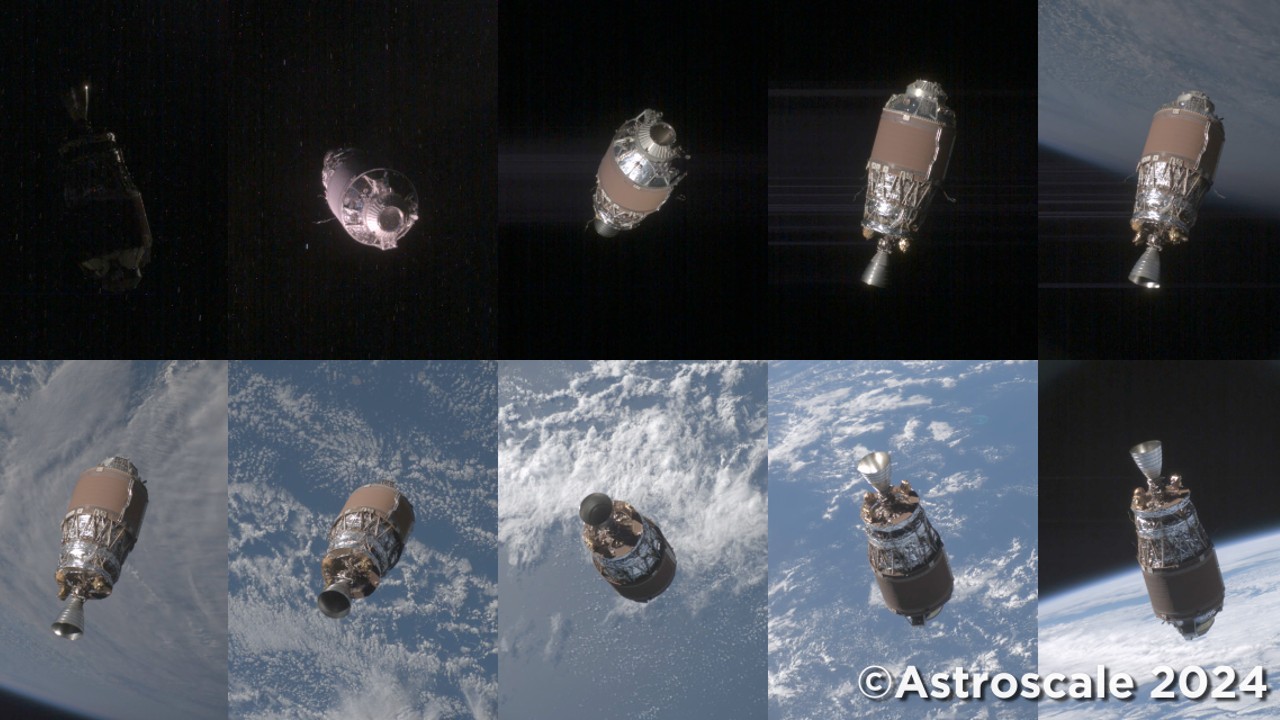Test your space debris catching skills in new game released by Astroscale
The free game is based on Astroscale's planned COSMIC mission, which will attempt to remove two old, defunct satellites from orbit.

Space sustainability company Astroscale has launched a computer game that allows players to test their space debris catching skills in a simulation based on one of the company's real missions.
The Space Protector game comes in different difficulties and can be played on a desktop computer or via a game console. Based on Astroscale's planned COSMIC mission, which will attempt to remove two old, defunct British satellites from orbit later this decade, the game allows players to control a robotic arm to capture an errant piece of space junk.
Astroscale, which has recently celebrated a major success when its ADRAS-J mission completed an inspection of a discarded Japanese rocket stage, hopes the game will promote the understanding of space sustainability among the general population.
"Educating the next generation about space sustainability is crucial for the future of our planet and beyond," Nick Shave, managing director of Astroscale UK, said in a statement. "'Space Protector' by Astroscale is not only a game; it's a way for people to understand the real technical challenges we face in addressing the space debris problem and provides a view of what will be possible through future routine in-orbit servicing."
Related: Kessler Syndrome and the space debris problem
In the nearly seven decades since the launch of the first satellite, the Soviet Union's Sputnik, Earth orbit has become something of a junkyard. According to the European Space Agency (ESA), about 40,500 pieces of space debris larger than 4 inches (10 centimeters) currently zoom around our planet. The number of smaller fragments is greater than 130 million. And both numbers keep rising.
As these objects orbit Earth at mind-boggling speeds of several miles per second, they threaten operational satellites as well as the International Space Station. Private companies like Astroscale and government-funded space agencies are therefore developing technologies that could enable them to remove some of the most dangerous space junk.
Breaking space news, the latest updates on rocket launches, skywatching events and more!
Astroscale is a leader in the field. The company's recently concluded ELSA-d (End-of-Life Services by Astroscale demonstration) mission, launched in 2021, tested autonomous approach and capture technologies needed for commercial space debris removal — a first for a commercial company.
In April, the Japanese Aerospace Exploration Agency (JAXA), confirmed Astroscale as a partner for the next phase of the ADRAS program, which will attempt to remove from orbit the 3-ton rocket stage inspected by ADRAS-J.
In July, the company signed a deal with satellite operator OneWeb to remove from orbit a decommissioned spacecraft from its constellation in 2027.
Through the Space Protector game, space fans can get a nearly hands-on experience with Astroscale's cutting-edge technology and understand what it takes to capture dead, unresponsive objects that may have been left tumbling in orbit for decades.
Other companies, too, are working on active debris removal technologies. For example, ESA and the Swiss company ClearSpace are working together on the ClearSpace-1 mission, which will attempt to deorbit a smaller rocket part in 2027.

Tereza is a London-based science and technology journalist, aspiring fiction writer and amateur gymnast. She worked as a reporter at the Engineering and Technology magazine, freelanced for a range of publications including Live Science, Space.com, Professional Engineering, Via Satellite and Space News and served as a maternity cover science editor at the European Space Agency.

